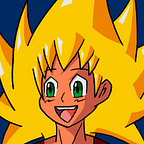Battle Hōshin / Mystic Heroes
バトル封神 / 超・バトル封神, Chō Batoru Hōshin (PS2 version)
Information
- Released for the PlayStation 2 (shown above) and GameCube in late 2002 (NA, EU, JP), including GBA (Japan only) which was released in early 2002; released 11 years later for the PS3’s PlayStation Store (digital copy; no longer available)
- Single-player (main story) and multiplayer (4-players) beat ’em up
- Developed and Published by Koei Tecmo (Koei at the time of the game’s release)
- Chinese-themed fantasy
Mystic Heroes, known as Battle Hōshin (バトル封神) in the original Japanese version, is based on Fengshen Yanyi, a supernatural Chinese novel about the fall of the Shang Dynasty and the rise of the Zhou Dynasty.
The fighting action game is very similar to Koei’s own Dynasty Warriors. Players can perform melee attacks and element spells, which become more powerful with continuous use. The game has eight stages.
Unlike Dynasty Warriors, the colors of the forces are reversed. Red represents the ally forces and blue represents the enemy forces. There are four playable characters in the GameCube version, and four unlockable characters in the PS2 version, for a total of eight. The game features a single-player story mode and three additional single-player modes, as well as co-op and versus multiplayer.
Plot
Long ago in a legendary land, Emperor Kang and his wife Sheva (King Zhou and Da Ji in the Japanese version, respectively) ruled with an iron fist. Tai and Naja, two elite mystics, sealed them away in Mt. Houshin, thus restoring peace. But Kang’s son, Cyrus (King Shou in the Japanese version), built up an army to battle the mystics in an attempt to free his father. At this time two more mystics, Shiga and Lani, joined the fight alongside Tai and Naja. The four mystics along with their friends once again saved the land and returned the peace. Now Emperor Kang, Sheva, and Generals Grifon (E Lai/Akurai in the Japanese version) and Kai start to plan their escape. Grifon brings up the existence of something known as the “Dragon Star”, which could free them. So Kang calls upon the powers of the Dragon Star, and he along with all of his minions are set free, giving Kang the chance to rise once again to dominate the land. This game takes place after Hōshin Engi, Magical Hōshin (this game takes place after the first title), and Hōshin Engi 2.
Characters
- Shiga (Ziya in the Japanese version) is the game’s main protagonist. A headstrong youngster from the East, he runs into some trouble during his journey with Lani to the City of Ancients. He specializes in wind magic and is the most balanced character. Voiced by Takahashi Naozumi in the Japanese version.
- Lani (Reiran in the Japanese version) is the main heroine. The descendant of a long line of mystics, and the holder of many secrets. A girl who fights only when absolutely necessary. She specializes in ice magic. She is the fastest and has the most magic and speed, but she is weak. Voiced by Yamazaki Wakana in the Japanese version.
- Tai (Taikoubo in the Japanese version, Taigong Wang in the Musou Orochi/Warriors Orochi series) is the son of a mystic, although he does not live on Mt. Senkai. Tai was training alone when his studies were cut short by mysterious events. He specializes in lightning, and he has the most magic and power but is the slowest walker. Voiced by Itō Kentarō in the Japanese version.
- Naja (Nata in the Japanese version, Nezha in the Musou Orochi/Warriors Orochi series) is the daughter of a mystic. She is sent by Master Gen to investigate the strange happenings at Mt. Hoshin with her partner Tai. She specializes in fire magic and is the most powerful character in the game. She runs slightly faster but has the weakest magic. In the original Japanese release, Naja is a boy, while in the western release, Naja is a tomboyish girl, since homosexual characters in video games were considered controversial at the time of the release. Voiced by Imai Yuka in the Japanese version before her retirement in September 2018 following various difficulties in her life such as her divorce and her son having pervasive developmental disabilities.
Okay, side note: I played mostly as Naja, because she wears a red robe… she somehow reminds me of my old teacher — oh, wait, I don’t want to spoil it.
PS2 exclusive characters
- Captain Dax (Yousen in the Japanese version; Yang Jian in Musou Orochi 3/Warriors Orochi 4 Ultimate; voiced by Okiayu Ryōtarō) — playable NPC in both survival and multiplayer modes
- Raja (Kou Tenka in the Japanese version; voiced by Masutani Yasunori) — playable NPC in both survival and multiplayer modes
- Mirah (Tou Sengyoku in the Japanese version; voiced by Yamazaki Wakana) — playable NPC in both survival and multiplayer modes
- Kai (Bunchuu in the Japanese version; voiced by Nakata Jouji) — playable boss in both survival and multiplayer modes
The game is somewhat hard to find nowadays but has since been released for the PlayStation 3 via the PlayStation Store (no longer available). This was the game of my childhood. If I did pull it off eBay, I can revisit the game. The game’s official website, formerly located at http://koei.com/launch/mystic_heroes/ (for North American territories), is no longer available and can only be accessed using the Wayback Machine (requires Ruffle, since Adobe Flash is long discontinued since 2021).
